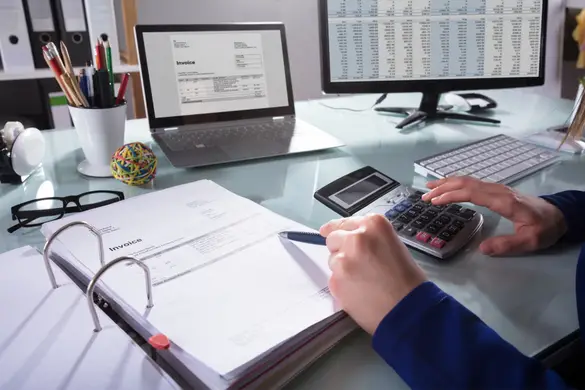
There are many ways to accurately record accounting supplies on hand. Meticulous accounting processes provide accurate internal financial reports and income tax returns for businesses. Precise knowledge of expenses significantly reduces a business’s tax liabilities. As an operational manager, thorough tracking of your supplies on hand accounts provides reductions in taxes and erroneous spending. Read on to discover how to accurately record accounting supplies on hand.
Supplies vs. Inventory
Distinguishing between supplies and inventory is a first step to accurate supplies on hand recording. Since this determination impacts your business’s taxes, ensure tax report accuracy by making it. Supplies are items your business uses for day-to-day operations, such as pens, sticky notes, and printer ink. Inventory refers to items your business sells to consumers. Your business is taxed on supplies, but not inventory. If your supplies and inventory become hard to manage, you might even consider hiring a supply chain consultant. Absolutely, recognizing the difference between supplies and inventory reduces costs by ensuring accurate tax reporting.
Determine Supply Consumption Rate
Next, determine your inventory of supplies and the rate at which they’re being used. Calculate the total value of all your on-hand supplies. Then, subtract that total from the accounting period’s starting balance to determine your supply expenses for the period. This way, you have a tangible number representing your business’s supply consumption rates. Accurately report by recording this number as your supply expense for the period. Certainly, determining your supply consumption rates reduces the risk of calculation errors.
Record Debits And Credits
Recording proper debits and credits in your financial records is the next step to ensure supplies on hand accuracy. For an expenses account, debits will increase the account and credits will decrease it. Record your supply consumption calculations as a debit, increasing the value of your expense account. Of course, accurate bookkeeping requires equal and opposite financial entries, so you’ll need to credit an asset account for the same amount. You should also keep a record of your business annual credit report. This way, you reduce errors and costs via thorough bookkeeping. Definitely, recording equal and opposite debits and credits ensures bookkeeping accuracy.
Make Adjusting Entries
To provide accurate supplies on hand reporting, make adjusting entries to adjust revenues and expenses. These entries involve at least two accounts, one being a balance sheet account and the other being an income statement account. Take your previous calculations and determine which account to debit and which to credit. Record the entries in the appropriate accounts and in your business’s general financial records. This way, you display exactly when this money changed hands. Of course, making adjusting entries provides reporting accuracy by converting real-time entries into accrual accounting entries.
Verify Balances
Verify the balances of affected accounts to provide your accounts with accuracy. At the end of each accounting period, check over your calculations and expense numbers. Test your entries against a trial balance to highlight any errors. The debit and credit balances should reflect their adjusting entry amounts. Report these amounts as expenses in each accounting period’s income statement. Notably, you can use an AVS credit card processor in your business to keep your transactions secure. Surely, verifying the balances reported on your entries fixes errors and mitigates the risk of future errors.
Accurately recording supplies on hand can be done in a myriad of ways. One way involves distinguishing between supplies and inventory for tax purposes as the first step. The second step is auditing your existing supplies to determine a tangible expense number. Use this number to record equal and opposite debits and credits in your expense accounts. Make adjusting entries by determining which expense accounts these calculations belong to. Finally, check and verify your calculations to ensure their accuracy. When wondering how to record accounting supplies on hand accurately, consider the steps described above.
 Business First Family Business, Accounting, Finance, Investing, Marketing And Management
Business First Family Business, Accounting, Finance, Investing, Marketing And Management